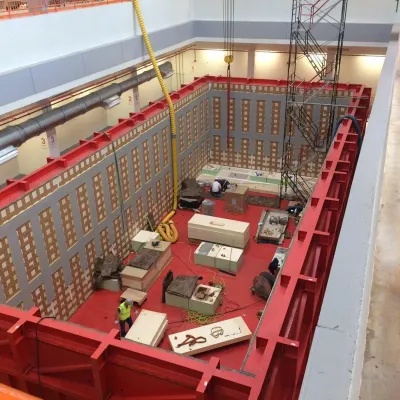About the Experiment
The proposed Short-Baseline Neutrino (SBN) physics program at Fermilab will deliver a rich and compelling physics opportunity, including the ability to resolve a class of experimental anomalies in neutrino physics. The far detector of the SBN program is the ICARUS-T600. The ICARUS collaboration employed the 760-ton T600 detector in a successful three-year physics run at the underground LNGS laboratory studying neutrino oscillations with the CERN Neutrino to Gran Sasso beam (CNGS) and searching for atmospheric neutrino interactions. The ICARUS-T600 cryogenic detector is the biggest LArTPC ever built, with the cryostat containing 760 tons of LAr. After a significant overhaul at CERN, the T600 detector has been installed at Fermilab. In 2020, cryogenic commissioning began with detector cool down, liquid argon filling and recirculation. ICARUS has started operations and successfully completed its commissioning phase, collecting the first neutrino events from the Booster Neutrino Beam (BNB) and the Neutrinos at the Main Injector (NuMI) beam off-axis, which were used to test the ICARUS event selection, reconstruction and analysis algorithms. The primary goal of the ICARUS data taking will then be a study to either confirm or refute the claim of sterile neutrino in order to explain the short baseline anomaly both in the νμ channel with the BNB and in the νe with NuMI. ICARUS will also address other fundamental studies such as neutrino cross sections with the NuMI beam and a number of Beyond Standard Model searches.


